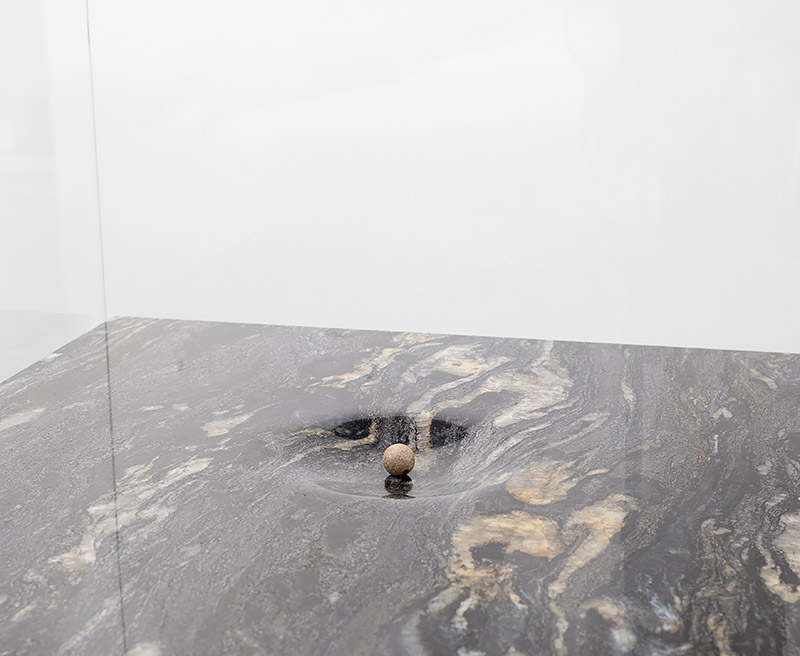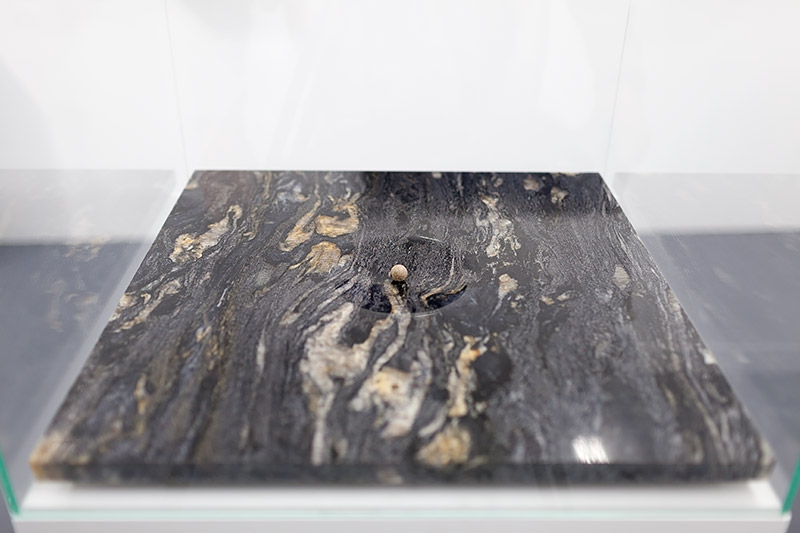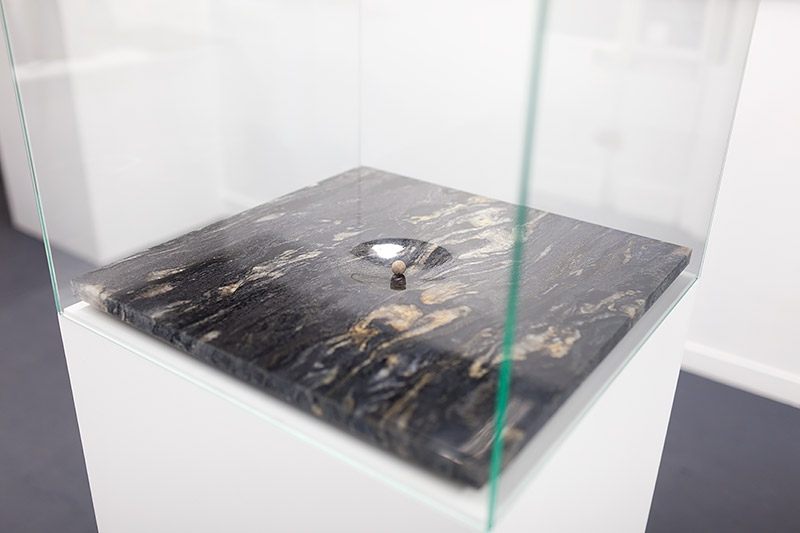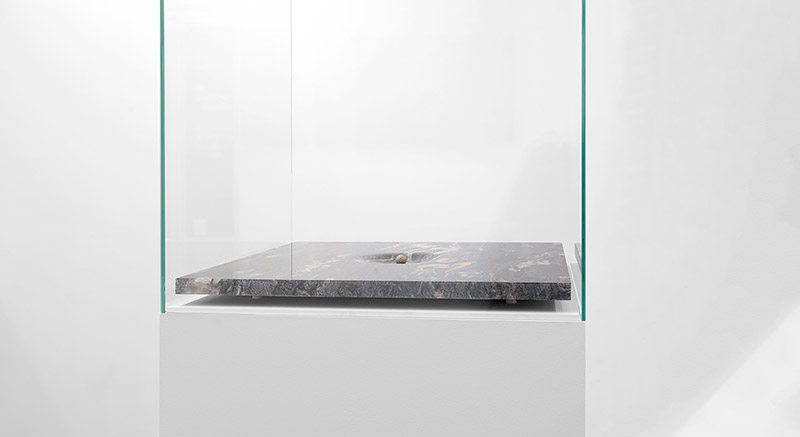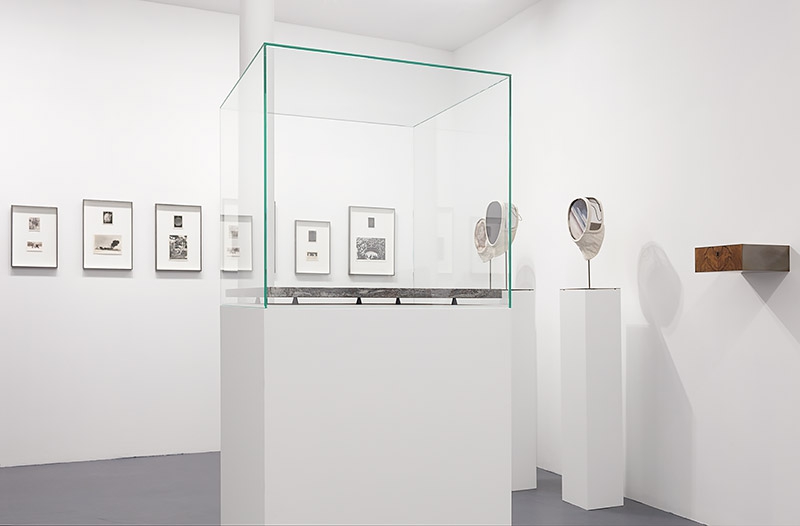We both step and do not step in the same rivers. We are and are not.
Moreover, we step into and out of the river as different beings.
Heraclitus (B49a)
-

A stone ball is placed in the centre of a slab of granite. The ball was hand polished at the Neolithic period, to be placed in the mouth of a corpse to serve as a passport, as an obol, without which passage into the next world would be impossible. The granite slab, meanwhile, is a slice of a “fusing nebula (…) time surging forth in the heart of matter” (Roger Caillois,
Stones).

The indentation in which the ball rests reproduces a diagram that demonstrates the theory of relativity, according to which the mass of an object curves space-time itself. From above, we thus confront a part of the galaxy, where the offering becomes a planet and the granite slab a figure of the infinite.
 Stone ball (Neolithic), granite, brass, glass lid, plinth
Stone ball (Neolithic), granite, brass, glass lid, plinth
53 x 53 x 50 cm (plinth not included)
Unique edition

Nous sommes le fleuve que tu invoquais, Héraclite.
Nous sommes le temps.
J-L Borges, Le Créateur
-
C’est là, tout au fond du creuset humain, en cette région paradoxale où la fusion de deux êtres qui se sont réellement choisis restitue à toutes choses les couleurs perdues du temps des anciens soleils (…)
André Breton, L'amour fou
-

Une bille de pierre est placée au centre d’une plaque de granit. La bille date de la période Néolithique ; placée dans la bouche d’un mort, elle était un passeport, une obole : sans elle, impossible de passer dans l’autre monde. La plaque de granit, elle, est une tranche de « nébuleuse en fusion (…) une durée surgie du cœur de la matière » (Roger Caillois, Pierres).

La partie incurvée dans laquelle se trouve la bille reproduit le schéma de la théorie de la relativité, où la masse d’un objet courbe l’espace-temps. On regarde ainsi, de notre hauteur, un morceau de galaxie où l’obole devient planète, et un carré de granit figure l’infini.

Obole (Néolithique), granit, laiton, capot de verre, socle
53 x 53 x 50 cm (socle non inclus)
Pièce unique

